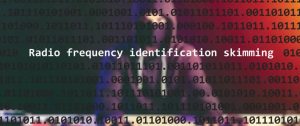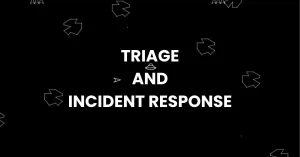
With DHL being one of the most spoofed domains, the logistics and transportation industry is turning more to secure file transfer. The shipping titan struggles with just one of the diverse security challenges the industry faces. Unfortunately, many of those risks are passed on to consumers, lessening industry credibility and creating unnecessary risk just when interconnectedness is at its peak and the demand for dependable goods transport is at its highest. Now, more than ever, shipping companies need to be on their game.
Secure File Transfer (SFT) is a tool for logistics and transportation organizations to help lessen the attack surface by locking down unauthorized access to sensitive files. It also allows them to close ranks around the security and compliance requirements that will make them a competitive and trustworthy option.
What is SFT?
Secure File Transfer is a security solution that streamlines the file transfer process while simultaneously protecting your data. It includes support for multiple file transfer protocols automation capabilities, and audit reporting.
The alternative is what many legacy architectures may already be using: custom scripts for batch and regular file transfer. The downside is the obvious costs in time, money, and human error. Every time you do something from scratch, it must be quality tested and is often not free of bugs until a disaster stress tests it.
Not so with SFT. capabilities allow you to transfer single, multiple, batch, or periodic files with your own custom processes and parameters. You can limit access to specified parties, the files being delivered, and keep an eye on which go through with built-in auditing. This results in:
- Data breach prevention | Modern authentication, secure protocols and strong encryption technology
- Compliance | Role-based permissions and detailed audit logs
- Increase productivity | Automated workflows and integration with existing applications
Transportation & Logistics Cyber Risks
This comes at a time when business is on the rise for the Transportation and Logistics (T&L) industry and attack opportunities abound. According to CSCMP’s 33rd Annual State of Logistics Report, trucking freight expanded by nearly 25% in 2022 and last-mile delivery increased as e-commerce sales grew by 10%, totaling a whopping $831 billion, or nearly 15% of all US retail sales. With so much interconnectedness, there’s plenty of business to go around, and criminals know that.
Researchers have identified various underground brokers selling credentials they say belong to logistics companies and claim to have obtained them through remote access vulnerabilities. Shipping and logistics giant, Expeditors, has been forced to shut down most of its operating systems worldwide after experiencing a cyberattack, and they turned over $10 billion in revenue last year. Swissport, a Swiss airport management service, fell prey to a BlackCat ransomware attack in February of 2022 that affected its IT systems.
And as the T&L industry modernizes, their newer networks “enable digital improvements like automated ordering, shipment tracking, and access to account information” which lack strict cybersecurity protocols are therefore “among the most insecure channels,” according to consulting firm BCG. Compounding these dilemmas,BCG notes that as the attack surface expands for the T&L sector, the cost of an attack has dropped significantly, lowering the bar to entry at a time when the industry is most exposed.
T&L Meets SFT
Loosely secured, unencrypted, and sloppily stored files are significant contributors to the expanding attack surface. That’s why GoAnywhere MFT works with T&L organizations to tamp down on rogue information and secrets that can be lost in file transfer.
In one all-too-common instance, a T&L company that went remote struggled with providing all new users the capability to securely transfer files. “We had some features that are not enabled for some individuals that needed to be activated quickly to allow secure, automated file transfers to occur from unsecure locations, such as employees’ homes,” said one administrator.
“We’ve found GoAnywhere to be intuitive and easy to learn the framework of projects…[and] the documentation is very comprehensive. When we invite a new user, we also now produce a personal user guide to handle the processes they are charged with, as a subset of GoAnywhere’s user’s guide,” he added.
Because so many T&L organizations are strapped for qualified cybersecurity experts (and who isn’t), it’s important to find an SFT solution that works with the team they have and has low downtime. To that end, the administrator remarked, “GoAnywhere has made it easy to do the configuration and assign inbound projects within the parameters of the program as the program allows us to do so with the staff we have. We’ve also really appreciated the ease of use and in setting up Advanced Workflows.”
Additionally, in a world where ‘compliance’ increasingly means ‘competitiveness’, an SFT solution is good for business; especially when that business involves shipping things around the world. “Some partners have such stringent security requirements that we have actually been quicker than we might otherwise have been to upgrade to newer versions of GoAnywhere as it can easily meet those requirements,” remarked the administrator. “Using GoAnywhere helps our partner relationships, as we can assure them that we are indeed using the strictest security protocols around file transfers.”
GoAnywhere MFT for Transportation and Logistics
Even if T&L companies are managing with manual file transfer methods, given the rising trend in both global shipping services and global shipping cyberthreats, it’s a real risk that those methods won’t be sustainable for long. An SFT solution like Fortra’s GoAnywhere MFT can not only ease the technology burden but offload the security strain. With GoAnywhere in place, the enterprise can store, share, and send files securely.
Implementing a trusted SFT solution can also help increase vendor confidence, potentially contributing to more contracts, faster deals, and increased global brand penetration as Transportation and Logistics organizations that can ensure encrypted transatlantic file transfers prove themselves as a safer supply-chain partner.
With the GoAnywhere MFT platform, T&L companies can oversee their secure file transfers end-to-end, no matter where the data lives or where it was deployed. It provides:
- Managed File Transfer | Simplify, secure, and automate file transfers enterprise-wide though a centralized, user-friendly interface designed to help employees, partners, and customers safely move data of any type or size easily and without the need for special programming skills.
- Secure Email and Collaboration | Emailing and collaborating is how business gets done and organizations can do so more confidently enterprise-wide with secure mail and collaboration tools for file syncing and sharing from Fortra’s GoAnywhere MFT.
Source: https://www.goanywhere.com/blog/how-transportation-and-logistics-firms-use-secure-file-transfer
About DT Asia
DT Asia began in 2007 with a clear mission to build the market entry for various pioneering IT security solutions from the US, Europe and Israel.
Today, DT Asia is a regional, value-added distributor of cybersecurity solutions providing cutting-edge technologies to key government organisations and top private sector clients including global banks and Fortune 500 companies. We have offices and partners around the Asia Pacific to better understand the markets and deliver localised solutions.










